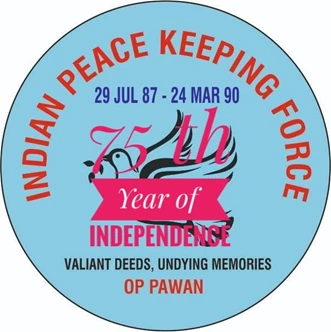The period from the last week of Jul till 15 Aug 22 has seen some interesting and emotionally loaded events, in the Indian military canvas, not least of which was the festive flag suffused commemoration of 75 Years of Indian Independence.
On 26 Jul 22, the Kargil Diwas was commemorated at the National War Memorial, Delhi, with traditional gusto and homage to the braves, who had given their all for the nation while fighting against the Pakistani intruders propped up by the regulars of the Pakistani Army, i.e. Northern Light Infantry. The battle involved unit level actions across the LOC, resulting in Indian victory. The National War Memorial, Delhi indicator described the encounter as a skirmish. Nevertheless, this “skirmish” resulted in the award of 4 PVCs and 10 MVC s, apart from other awards. The indefatigable Indian junior leadership had measured up to the challenge, pulling India s chestnuts out of the fire again …..and again.
On 29 Jul 22, a group of 70 veterans, including ladies and one serving officer, privately commemorated the KIA of the Indian Peace Keeping Force, at the National War Memorial, for the second year in succession. Since this was a private commemoration, no media was present to cover the event.

More recently, on 15 Aug 22, the Army recovered the skeletal remains of a soldier of 19 Kumaon, Lance Naik Chandra Shekhar, in Siachen, a victim of a 37-year-old foray called OP MEGHDOOT, when the fight for glacial heights was underway. Understandably though, the soldier’s poor, distraught widow was not sure whether to be happy or sad, even as the mortal remains were dispatched with full military honours to the ancestral village in Haldwani for the last rites.
Down south, across the Indian Ocean, Vice Admiral of Indian Navy, SN Ghormade, paid homage at the memorial of Indian soldiers in Sri Lanka, on 16 Aug 22, who fought as part of the Indian Peace Keeping Force from 30 Jul 1987 to 24 Mar 1990, for 32 months.
These series of apparently unrelated events coalesce to highlight the unacknowledged contribution of the braves and veterans of OP PAWAN.
The Indian Peace Keeping Force (IPKF) was India s largest overseas operations carried out based on a national mandate, with more than four infantry divisions and a CRPF battalion deployed to protect India s strategic interests and also to safeguard Sri Lanka, which was in the throes of a civil war. The IAF and Navy also played a vital role. The IAF, especially so when it came to the utilisation of MI-8 and MI-25 in assault roles, winning 11 VrC in this war. In the case of the Navy, an additional close support role in securing and sanitising ports of KKS and Trincomalee was performed admirably by their MARCOS or underwater commandos. Navy would haul a tonnage of more than 1 lakh Tons, whereas the IAF flew record sorties,70,000 in number. The tally of the IPKF included 1 PVC, 6 MVC, 98 VrC, and the first SYSM, apart from a score of other awards. Total KIA was 1171, as per the National War Memorial list, with 3000 grievously injured due to the ubiquitous employment of IEDs by LTTE. Whereas Indian officials and Armed Forces personnel routinely carry out wreath laying at IPKF Memorial in Colombo, the same does not happen exclusively for the IPKF at the NWM, Delhi. Yet an operation of this magnitude, scale and duration languishes in recognition and contribution, as it is not commemorated officially.

Many unidentified graves in Sri Lanka belong to the IPKF braves. The details of the same are highlighted by an earlier article penned by Maj Gen Jose Manavalan, a former IPKF Veteran and key staff officer, in the bloody North to South advance of the Indian Army in Oct 1987, which eventually cracked the LTTE stronghold in Jaffna. Nobody seems to be in a hurry to identify these graves and give the next of kin closure. For the kin, there remains no closure as of date.
The private commemoration held by IPKF veterans at NWM, New Delhi, was a “silent” function, as per AG Branch instructions, and was given the skip by the serving soldiers who wanted to attend. The apparent reason …a communication by the Army to serving personnel to keep off the private NWM commemoration! Over 150 odd units from various arms /services were deployed or turned over in Sri Lanka. An astounding 130 combat arms and service units suffered some or many casualties in this war.
Undoubtedly the top Armed Forces hierarchy, at the apex, needs to have sharper moral and humane understandings of such delicate issues. For what reason do they fear, and whose displeasure? And if they do fear, such leaders must imbibe the purport of the phrase coined by Empress Theodora “The royal purple is the noblest shroud”. Sometimes it is good to take a stand and face the consequences.
